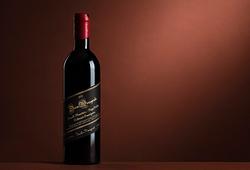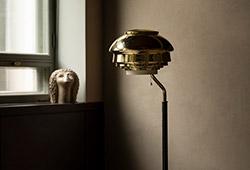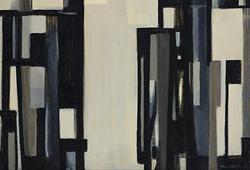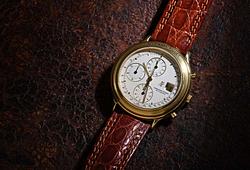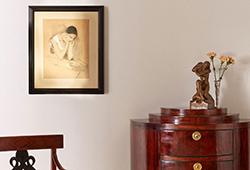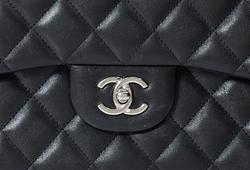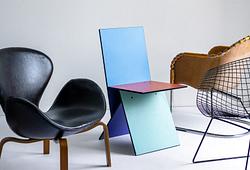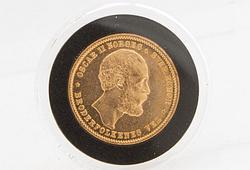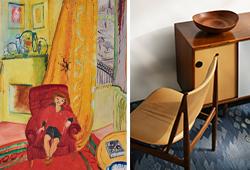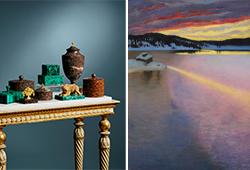Pablo Picasso
La nymphe et le satyre
Signerad Picasso och daterad 2 mai 40. Pen and ink on paper 37 x 45 cm.
Saleroom notice
Measurements 37 x 45 cm. The ink faded considerably. Some lines enhanced with black ink, most probably by another hand. Minor surface soliling alongside edges of sheet, pale foxing evenly scattered all over the sheet, a small damp-stained area to lower right part.
Exhibitions
Liljevalchs Konsthall, Stockholm, "Från Cézanne till Picasso, Fransk konst i svensk ägo", September 1954, cat no 293 (under the title Jeune homme assis et domreuse).
Literature
Christian Zervos, "Pablo Picasso, vol. 10, Oeuvres de 1939-1940", cat no 515, illustrated pl. 151.
The Picasso Project, (ed.), Picasso's Paintings, Watercolors, Drawings and Sculpture, Europe at War, 1939-1940, San Francisco, 1998, no. 40-369 (illustrated p. 188).
Artist
Pablo Picasso (1881-1973), Spanish painter, printmaker, sculptor, and ceramist. Active in France since 1900. He is, alongside Matisse, the most dominant artist of the 20th century. After passing through a blue period, a pink period with circus scenes and harlequins, he created his first cubist painting, "Les Demoiselles d'Avignon," in 1907 under the influence of African sculptures. Together with Braque, he further developed cubism by breaking down surfaces, which were then represented in various simultaneous aspects. In 1912, he left nature and recreated a new reality, only to return to acrobats in 1916. During the 1920s, he approached surrealism and worked with whimsical forms while also producing drawings and etchings in line style. During the Spanish Civil War, he was violently stirred, and it is now that his great protest in the painting Guernica comes to fruition. In the late 1940s, he settled by the Mediterranean and produced nymphs, centaurs, and fauns, as well as paraphrases of the works of old masters, and painted powerful terracotta ceramics in Vallauris. His abundant graphic production follows the same development as his painting.
Pablo Picasso was not only an artist but also a skilled ceramist. During his lifetime, he created hundreds of ceramic works, such as jugs, vases, and plates. Picasso's passion for ceramics began when he visited the annual ceramics exhibition in Vallauris in southern France in 1946 and was introduced to the craft by the artist couple Suzanne and Georges Ramié, who owned the Madoura pottery. During the following years which he spent in Vallauris, Picasso met his second wife, Jacqueline Roque, whom he depicted on the ceramic pieces. He also decorated the ceramics with abstract animals and bullfighters in a cubist style.
Read more



